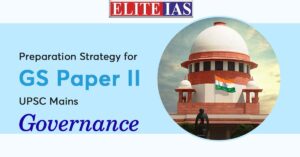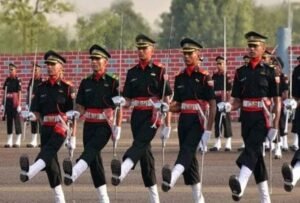GS 2
On ED’s power to arrest and seek custody
Context:Tamil Nadu Minister V. Senthilbalaji faced arrest by the Enforcement Directorate (ED) in a money-laundering case related to a cash-for-jobs scam. The Madras High Court upheld the legality of his arrest and subsequent remand in judicial custody, but there was a split verdict on the issue.
Significance: The question in focus was whether the ED has the power to seek custody of an arrested person under the Prevention of Money Laundering Act (PMLA), 2002.

High Court’s Ruling:
- The judge acknowledged that ED officials are not police officers, as per a Supreme Court ruling in Vijay Madanlal Choudhary versus Union of India (2022).
- However, the judge noted that Section 167 of the Code of Criminal Procedure (CrPC) was applicable since Section 65 of the PMLA makes the CrPC provisions applicable, with necessary changes.
- The word ‘police’ was interpreted to mean ‘Investigating Agency’ or the ‘Enforcement Directorate’ for the purpose of the case.
- While ED officials are not considered police officers for the admissibility of statements in evidence, they can still subject accused individuals to custodial interrogation to gather vital information.
Supreme Court’s Previous Rulings on PMLA:
- The Supreme Court’s ruling in Vijay Madanlal Choudhary versus Union of India (2022) upheld various provisions of the PMLA, granting powers of arrest, attachment, search, and seizure to the ED.
- Section 19 of the PMLA, allowing arrest without a warrant, was upheld, citing inbuilt safeguards to prevent misuse of power by ED officials.
- The PMLA aims not only to punish money-laundering offenses but also to prevent money laundering and compel financial institutions to maintain transaction records.
- In P. Chidambaram versus Directorate of Enforcement (2019), the Supreme Court rejected anticipatory bail in a money-laundering case and granted custody to the ED for a thorough investigation involving multiple stages of fund placement and layering.
Courts’ Stance on Monitoring Investigations:
- The courts emphasized that they should not interfere in investigations unless there is a violation of the law or an abuse of power.
- The investigating agency’s discretion in determining the course of the investigation was highlighted.
- The court must only use its inherent powers under Section 482 of the CrPC to intervene if there is malafide intent or non-compliance with the provisions of the CrPC.
Challenging the HC Verdict:
- Following the High Court’s ruling, Mr. Balaji and his wife approached the Supreme Court to challenge the legality of his arrest upheld by the HC.

Dilemmas of India’s great power ambitions
Context: The discussion revolves around India’s future role as a global power.
Relevance: GS 2 International Relations
The Rise of India and Its Consequences:
- India’s growth and challenges over the past three decades are highlighted.
- From a weak and poor nation in 1991, India has transformed into a major economic and military power by 2023.
- The country has gained significant global importance and plays a pivotal role in international politics.
- The rise of India has consequences for both the world and its citizens, shaping the future in crucial ways.
Balancing Domestic Priorities and Global Engagement:
- While India’s rise as a global power is significant, it still faces major domestic issues, such as poverty, governance, and infrastructure challenges.
- Poverty reduction and well-being of citizens remain pressing concerns for India’s political class, diverting attention from foreign policy matters.
- Limited economic strength affects resource allocation for foreign policy objectives, impacting India’s global influence.
The Dilemma: To Engage or Not?
- The debate questions whether India should wait until resolving domestic challenges before asserting itself on the global stage.
- The article argues that India cannot afford to refrain from shaping the global order, as it would mean being a “rule taker” rather than a “rule shaper.”
- India’s engagement in global affairs is essential to meet its foreign policy objectives, impact economic growth, and protect its interests in an interconnected world.
Shaping International Politics and Domestic Context:
- India’s global engagement must align with its domestic context, prioritizing the well-being of its people.
- The article emphasizes that India’s assertiveness on the global stage is not a matter of nationalistic hubris but a necessity to safeguard its interests and influence the world order.
Conclusion:
- India faces a complex challenge of balancing its domestic priorities with its aspirations as a rising global power.
- While India’s economic and military growth is impressive, addressing domestic issues remains crucial.
- Despite limitations, India’s global engagement is essential to protect its interests and shape the world order in line with its objectives and well-being of its citizens.
GS 3
Climate targets are becoming outdated: India needs its own
Context: The article discusses the concerns and consequences of crossing the 1.5 degrees Celsius warming target and the bigger question about the constant alarmist messaging regarding the climate crisis.
Relevance: GS 3 Environment

Origins of the 2 Degrees Celsius Target:
- The 2 degrees Celsius target was not derived scientifically but was rather adopted due to its round number appeal and later retrofitted to climate impact projections.
- The Alliance of Small Island States demanded that the target be lowered to 1.5 degrees Celsius, leading to projections adjusted to meet this aspirational target.

Uncertainties and Challenges in Climate Projections:
- The reliability of earth system models (ESMs) used for climate projections at smaller scales, especially for regions like the Indian subcontinent, remains uncertain, particularly concerning rainfall predictions.
- Predicting socioeconomic and geopolitical events, as well as technological advancements, that impact climate change mitigation efforts is challenging, given inherent uncertainties.
India’s Tough Choices and Leadership Role:
- India and other economically developing countries must develop their own tools to determine the local impacts of climate change for adaptation plans.
- India should demand improved projections from the IPCC that quantify impacts at local scales and continuously track climate change consequences.
- Decarbonizing the system and focusing on green technologies can be a more effective approach for tackling climate change and growing the economy.
Conclusion:
- There is a need for a balanced approach to addressing climate change concerns without resorting to constant alarmism.
- It advocates for better scientific projections, focusing on local impacts and the development of green technologies as a way forward for India and other developing nations.
Prelims
A different kettle of fish: Kashmir wants Europe to taste its trout
Introduction to Trout Farming in Kashmir:
- In 1900, a Scotsman named J.S. Macdonall introduced trout eggs into Kashmir, transforming the region into a popular fishing hub for local and foreign anglers.
- Over the years, trout farming has grown significantly, and trout has become a popular fish on the Valley’s platter.
- In recent years, the trout farming industry has witnessed remarkable growth since the Jammu and Kashmir government allowed private players to enter the sector.
Rise of Trout Farming in Kashmir:
- The entry of European experts motivated J&K towards trout farming, leading to small farmers taking up farming initially.
- As of 2022-23, the number of trout farmers in J&K has grown to 1,144, and production has increased by over 200% to 1,990 tonnes.
- The state’s water and climatic conditions are suitable for trout farming, and educated unemployed youth are now participating in the industry.
Potential for Exporting Trout:
- Many farmers in Kashmir are eyeing opportunities to export trout to meet European demand, with dreams of surpassing Denmark, which produces over 55,000 tonnes of trout annually.
- The local market fetches a good price for trout, with one kilogram selling for ₹500 to ₹600.
- The government offers subsidies and support to set up trout farms, and a trout feed mill from Holland has been employed to aid production.
Challenges and Solutions:
- Climate change poses a threat to the trout industry as high-altitude lakes and water bodies shrink and disappear.
- To counter this, the government is promoting Recirculating Aquaculture Systems (RAS), which use groundwater to create in-house ponds for trout farming, allowing the fish to survive in controlled conditions.
- RAS projects are gaining popularity, and bigger businesses are starting to show interest in trout farming.

Potential for Kashmiri Trout as an Export Product:
- Officials hope that Kashmiri trout could become the region’s next big export product, similar to the global popularity of Kashmiri apples.
Conclusion:
- Trout farming in Kashmir has seen significant growth in recent years, with an increasing number of farmers and higher production levels.
- The government’s support and the adoption of innovative technologies like RAS are helping the industry overcome challenges and expand its potential for export markets.



